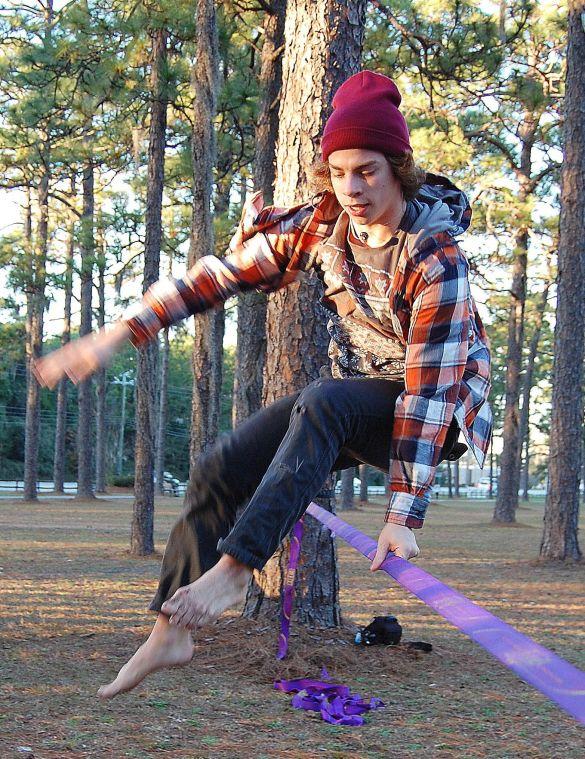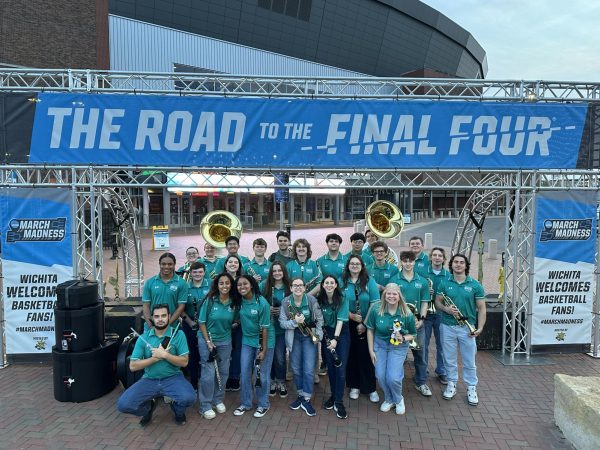New slacklining club teaches balance without juggling bears or leotards
Balance, tension, focus and skill are the keywords when describing one of the newest editions to UNCW’s repertoire of clubs and organizations. The UNCW slackline club is, as of Oct. 11, officially recognized as a campus organization.
It began last fall when club officer Kevin Lally introduced his friends and fellow club officers. Dale Midkiff, Pierce Morris, E.J. Gwin and Nick McLoota, to the world of slacklining and they began frequently practicing.
“A big part of slacklining is the health benefits, it works the muscles, increases core strength and posture along with heightening a sense of mental focus,” Morris, the club’s Vice President, said. “I hope slacklining will become a regular sport or exercise.”
Slacklining involves stringing a flat 1″ adjustable, tensioned polyester or nylon rope between two stationary points called anchors in order to walk and perform tricks. Slacklining is different than tight-rope walking because the line’s tension is less taut, allowing it to relax under human weight for extra bounce and stretch. This enables “slackers” to perform intricate tricks involving bouncing, jumping, spinning and flipping. There are multiple types of slacklining including tricklining, a typical practice of the UNCW slackline club, waterlining, highlining, and “yogaslacking.”
To get the club started, Midkiff learned the policies and procedures to becoming a recognized club last spring. They began with a constitution, stating that the purpose of the club was “for members to develop their balance, self-awareness, focus, and physical fitness in a fun and sociable environment.” It also covered the bases of being a club, including objectives, membership requirements, meeting descriptions and club amendments.
The six-page document had all the technicalities laid out, but the club and it’s members are laid back, welcoming anyone who wants to try slacklining. To join, UNCW students must submit the required waiver and club dues, which go towards t-shirts for members and equipment for the club.
“Overall, the club has been very successful, we have about a dozen active members who show up and slack regularly and about 25 more members who show support and occasionally attend meetings,” Morris said.
One big aspect of the club, said Midkiff, was community outreach. Being that trees are the typical anchors for slacklines, they are easily damaged without proper protection. The club has “tree huggers” specifically designed to wrap around the tree beneath the cord in order to eliminate abrasion and disperse the tension on the tree’s bark. Due to the link between trees and slacklining, the club is contemplating different outreach efforts including tree protection and conservation in the Wilmington area.
The slacklining club hopes to attract a variety of new members to their mission of exercise, fun and philanthropy. To learn more you can go to their Facebook.








